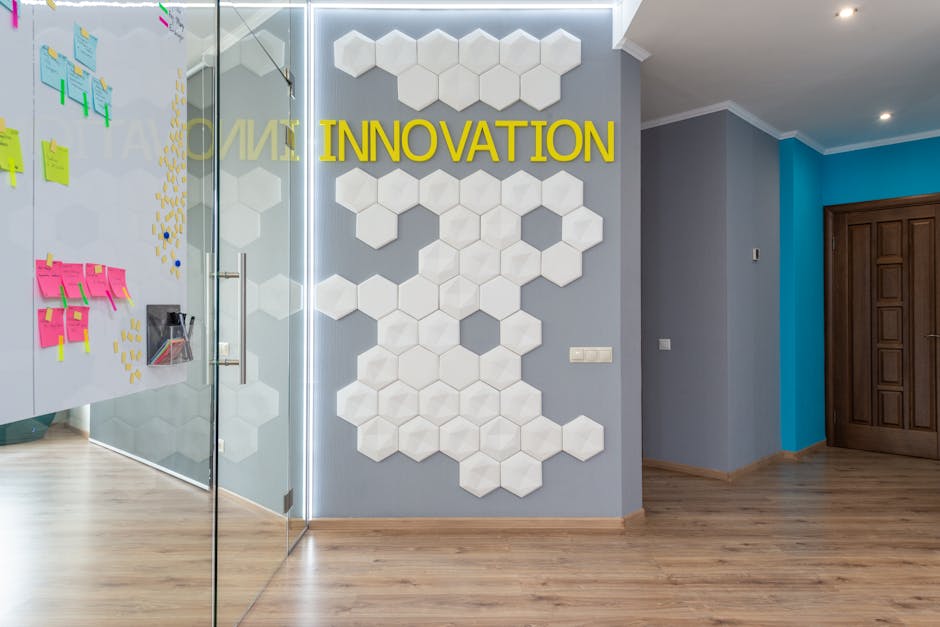Blogs
Our reflections on effective Hybrid Working, from WOX and friends

Sophia Marshall
Definitive Guide to Risk Management: A Comprehensive Explanation

Oliver Wright
Introducing Desk Booking by the Hour: Get More Out of Your Space
Latest articles

Transforming Your Workplace with Smart Meeting Room Solutions
Smart meeting room solutions are transforming the modern workplace, offering a range of features to optimize space utilization, enhance productivity, and streamline operations. From room resizing and auto-release to analytics and integrations, discover how these innovative technologies can revolutionize your office.
By Oliver Wright

Revolutionizing Front Desk Security: A Comprehensive Guide to Keeping Your Workplace Safe
This comprehensive guide explores five critical steps to revolutionize front desk security and create a safe, welcoming workplace. From visitor screening and detailed logging to custom badges and incident management, learn how to empower your front desk staff and protect your employees.
By Nora Bradford

Optimizing Visitor Flow Management: 10 Tips for a Seamless Sign-In Experience
Streamlining your visitor flow management is crucial for creating a positive first impression and ensuring a seamless sign-in experience. This article explores 10 tips to optimize your visitor sign-in process, including customizing sign-in flows, leveraging technology, and tailoring the experience to different visitor types.
By Oliver Wright

Navigating the Compliance Management Landscape: A Comprehensive Guide
In today's complex regulatory environment, compliance management is a critical aspect of business operations. This comprehensive guide explores the essentials of compliance management, from key regulations to building a culture of compliance within your organization. Learn how to navigate the complex compliance landscape and ensure your company stays compliant in an ever-evolving world.
By Isabella Hunter

The Rise of Smart Workplace Technology: Transforming Office Environments
Smart workplace technology is reshaping modern offices, offering enhanced productivity, flexibility, and employee satisfaction. This article delves into the latest trends, benefits, and challenges of implementing intelligent solutions in the workplace.
By Lucas Hamilton

HR Checklist: Navigating the UK's New Flexible Work Legislation
The UK's new flexible working legislation, effective April 6, 2024, brings significant changes to workplace policies. This comprehensive HR checklist guides managers through key steps to ensure compliance, support employee rights, and foster a more adaptable work environment.
By Isabella Hunter

Maximizing Office Space Efficiency with Desk Booking by the Hour
As workplaces embrace flexible work arrangements, managing office space efficiently becomes a challenge. Desk booking by the hour offers a solution, allowing employees to reserve desks when needed and freeing up space when they don't. This article explores how hourly desk booking can help you maximize office space usage, improve employee productivity, and support hybrid work schedules.
By Julian Everett

Inspiring Company Culture: 3 Examples of Values That Drive Success
Company values are the shared beliefs that guide how a business operates and makes decisions. This article explores three examples of companies - Pinterest, Snagajob, and PagerDuty - that use unique, memorable, and actionable values to inspire strong cultures and drive success. Learn practical tips for infusing your own company's values into the employee experience.
By Nora Bradford

Infusing Hospitality into Workplace Experience Management
This article explores the importance of infusing hospitality into workplace experience management. By focusing on creating a welcoming, engaging, and customer-centric environment, companies can boost employee satisfaction, productivity, and retention. Learn from industry experts and discover practical tips for transforming your workplace culture.
By Alexander Bennett

Out of This World: 20 Cosmic Meeting Room Names Inspired by Planets and Moons
Transform your office space into a celestial journey with our curated list of 20 meeting room names inspired by planets and moons. This blog explores creative and professional designations that will spark imagination and foster a sense of cosmic wonder in your workplace.
By Amelia Clarkson

Exploring History: 20 Inspiring Meeting Room Names for Your Workplace
Transform your workplace with 20 inspiring meeting room names based on famous explorers. This article provides creative ideas to infuse your office space with a sense of adventure and historical significance, perfect for corporate environments seeking to motivate and engage employees.
By Alexander Bennett

Sparkling Inspiration: 20 Precious Gems and Minerals for Your Meeting Room Names
Transform your workplace with a touch of elegance by naming your meeting rooms after precious gems and minerals. This article presents 20 unique and inspiring names that will add a sparkle to your office environment, fostering creativity and leaving a lasting impression on employees and visitors alike.